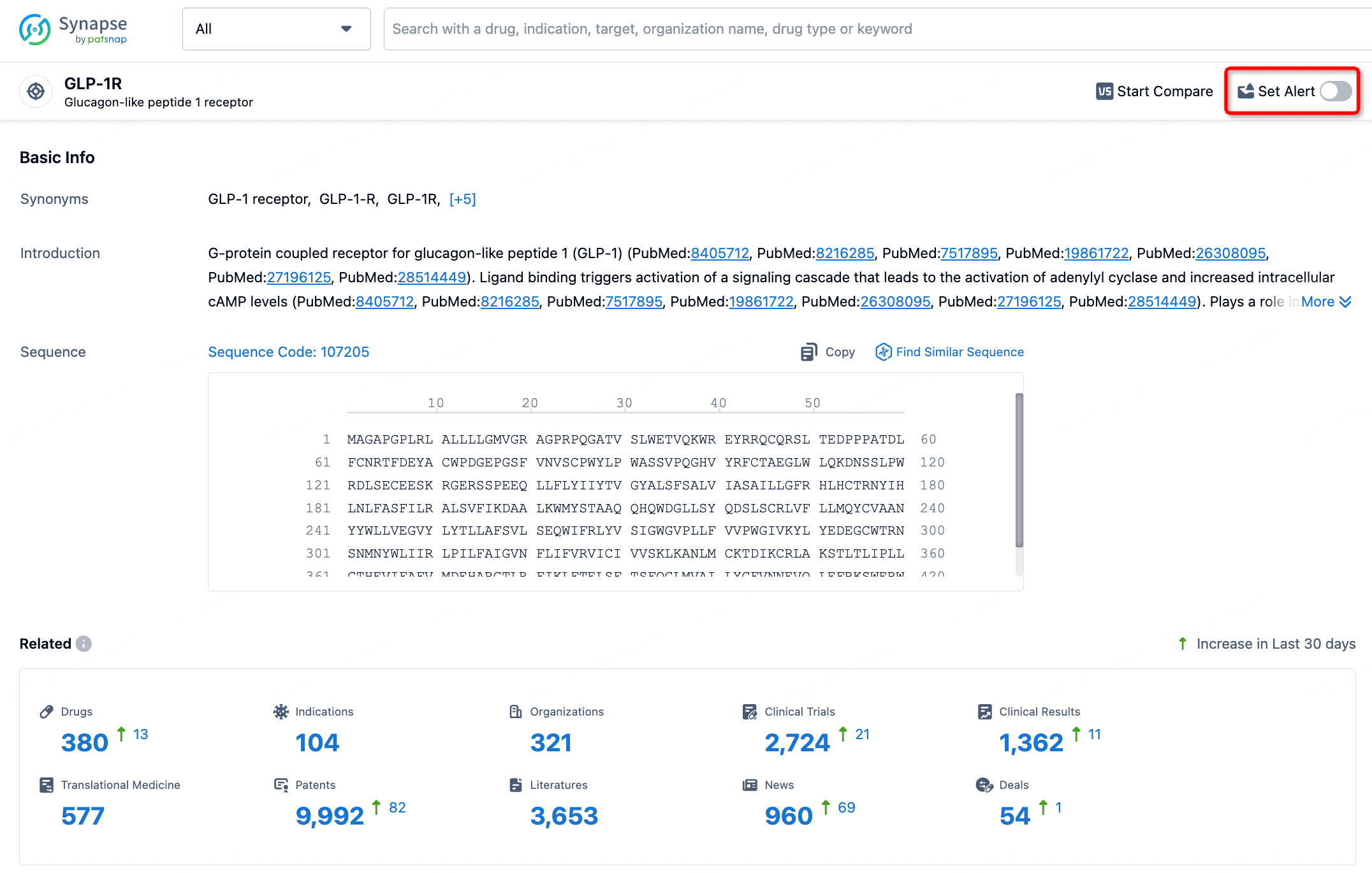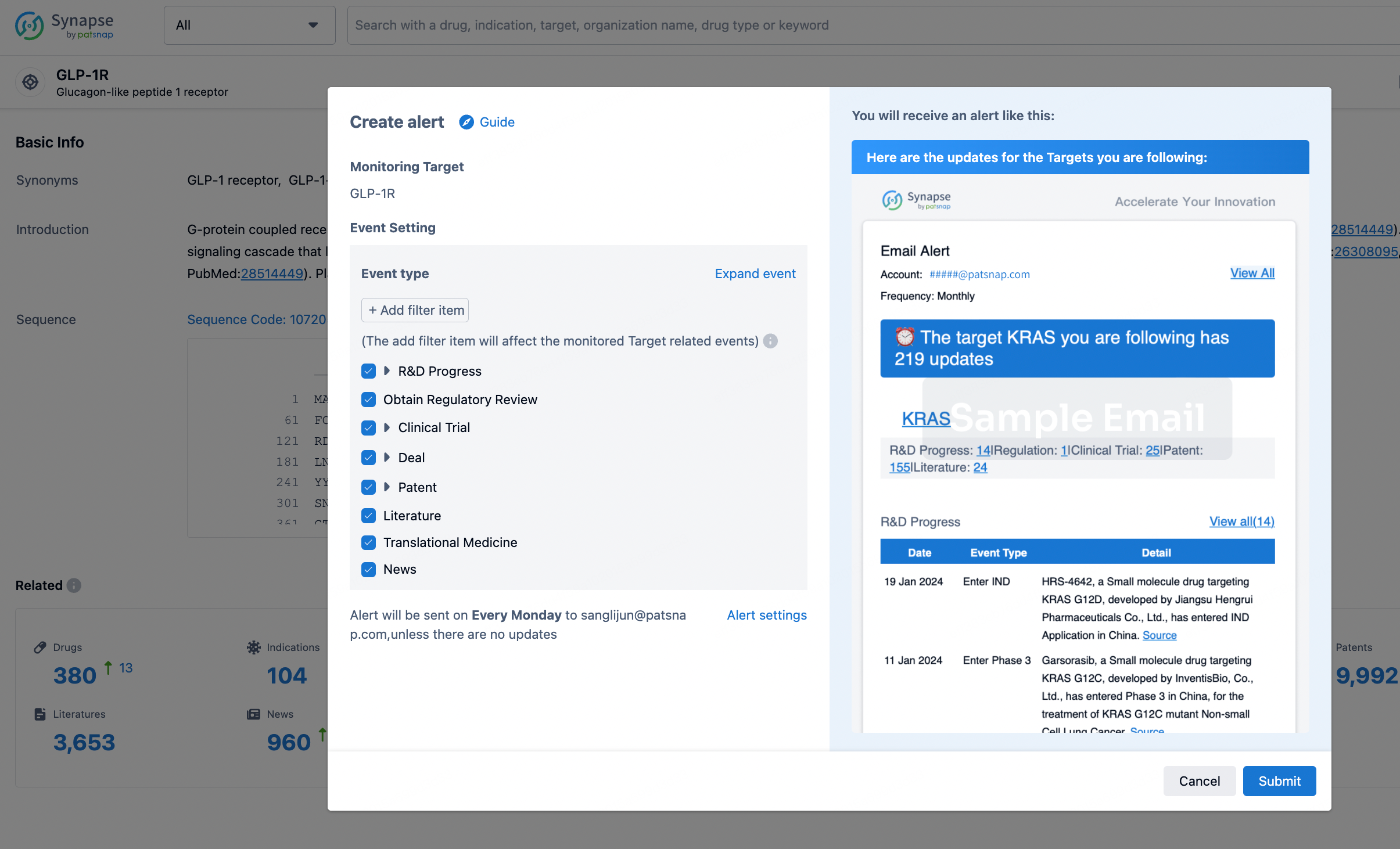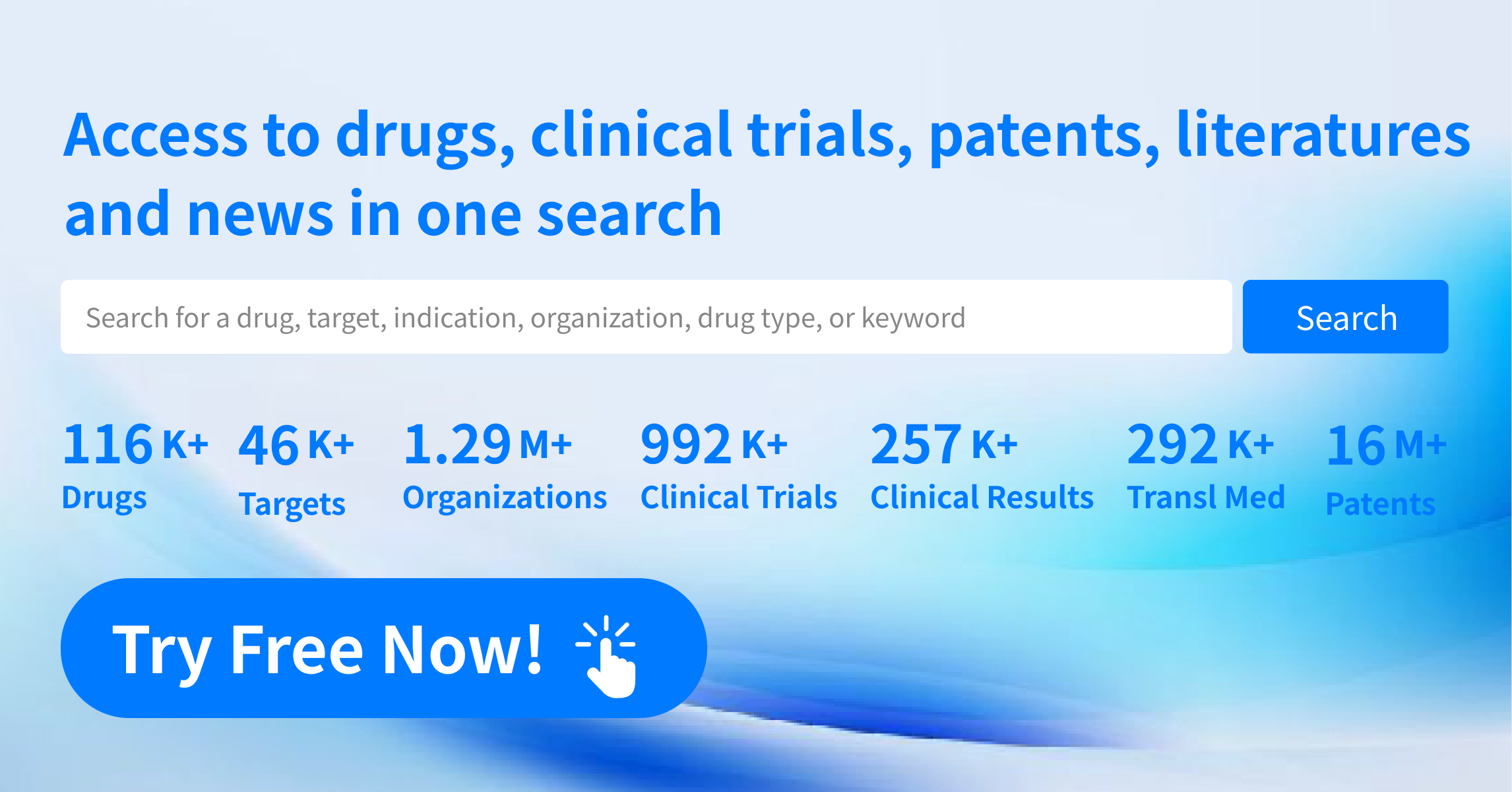Request Demo
What are MBNL1 stimulators and how do they work?
25 June 2024
Introduction to MBNL1 Stimulators
The exploration of genetic and molecular therapies has led to exciting advancements in the treatment of various diseases, especially those that are currently challenging to address with conventional medicine. One such breakthrough is the study and potential use of MBNL1 stimulators. MBNL1, or Muscleblind-like protein 1, is a RNA-binding protein that plays a critical role in regulating alternative splicing, a process by which a single gene can give rise to multiple proteins. This regulation is essential for normal cellular function and development, particularly in muscle and neuronal tissues. MBNL1 dysregulation is implicated in several diseases, most notably myotonic dystrophy. MBNL1 stimulators have thus emerged as a promising therapeutic avenue.
How do MBNL1 Stimulators Work?
To understand how MBNL1 stimulators work, it's essential first to grasp the function of MBNL1 within cellular biology. MBNL1 binds to specific RNA sequences and regulates the splicing of pre-mRNA, ensuring that the resulting mRNA is correctly processed and translated into functional proteins. In conditions like myotonic dystrophy, expanded CUG repeats in the DMPK gene sequester MBNL1, preventing it from performing its splicing duties. This leads to the production of aberrant proteins and subsequent cellular dysfunction.
MBNL1 stimulators aim to enhance the activity or expression of MBNL1, thereby compensating for its sequestration. These stimulators can work through various mechanisms. Some compounds may increase the transcription of the MBNL1 gene, thereby boosting the overall levels of the protein in the cell. Others might enhance the stability of the MBNL1 protein, prolonging its functional lifespan. Additionally, small molecules could be designed to disrupt the interaction between MBNL1 and the toxic RNA repeats, freeing the protein to resume its normal regulatory functions.
Research has shown that increasing MBNL1 activity can restore normal splicing patterns, reduce the accumulation of toxic RNA foci, and ultimately ameliorate the symptoms of diseases like myotonic dystrophy. This makes MBNL1 stimulators an attractive target for drug development.
What are MBNL1 Stimulators Used For?
The primary impetus for the development of MBNL1 stimulators comes from their potential application in treating myotonic dystrophy (DM), particularly myotonic dystrophy type 1 (DM1). DM1 is a multisystemic disorder characterized by muscle weakness, myotonia (difficulty relaxing muscles), cardiac abnormalities, and various other symptoms. The root cause of DM1 is the expanded CUG repeats in the DMPK gene, which sequester MBNL1 and disrupt normal splicing.
Clinical and preclinical studies have shown promising results with MBNL1 stimulators in alleviating the symptoms of DM1. By restoring MBNL1 activity, these stimulators can correct the splicing defects and reduce the pathologic manifestations of the disease. This therapeutic approach could potentially provide significant relief to patients suffering from DM1, who currently have limited treatment options.
Beyond myotonic dystrophy, MBNL1 stimulators hold potential for other conditions where alternative splicing plays a crucial role. For example, cardiac and skeletal muscle diseases, where aberrant splicing contributes to pathogenesis, could benefit from MBNL1-targeted therapies. Additionally, certain neurodegenerative diseases, where MBNL1 activity is compromised, might also be amenable to treatment with these stimulators.
Moreover, the broader implications of manipulating RNA splicing through MBNL1 cannot be understated. RNA splicing is a fundamental cellular process, and its dysregulation is implicated in a wide range of diseases, including various cancers and metabolic disorders. Understanding and harnessing the power of MBNL1 stimulators could pave the way for novel therapeutic strategies across a spectrum of conditions.
In conclusion, MBNL1 stimulators represent a promising frontier in the realm of genetic and molecular therapies. By targeting and enhancing the function of a critical RNA-binding protein, these stimulators offer hope for treating complex diseases, particularly those with limited current treatment options. As research in this area continues to advance, the potential for MBNL1 stimulators to make a significant impact on human health becomes increasingly evident.
The exploration of genetic and molecular therapies has led to exciting advancements in the treatment of various diseases, especially those that are currently challenging to address with conventional medicine. One such breakthrough is the study and potential use of MBNL1 stimulators. MBNL1, or Muscleblind-like protein 1, is a RNA-binding protein that plays a critical role in regulating alternative splicing, a process by which a single gene can give rise to multiple proteins. This regulation is essential for normal cellular function and development, particularly in muscle and neuronal tissues. MBNL1 dysregulation is implicated in several diseases, most notably myotonic dystrophy. MBNL1 stimulators have thus emerged as a promising therapeutic avenue.
How do MBNL1 Stimulators Work?
To understand how MBNL1 stimulators work, it's essential first to grasp the function of MBNL1 within cellular biology. MBNL1 binds to specific RNA sequences and regulates the splicing of pre-mRNA, ensuring that the resulting mRNA is correctly processed and translated into functional proteins. In conditions like myotonic dystrophy, expanded CUG repeats in the DMPK gene sequester MBNL1, preventing it from performing its splicing duties. This leads to the production of aberrant proteins and subsequent cellular dysfunction.
MBNL1 stimulators aim to enhance the activity or expression of MBNL1, thereby compensating for its sequestration. These stimulators can work through various mechanisms. Some compounds may increase the transcription of the MBNL1 gene, thereby boosting the overall levels of the protein in the cell. Others might enhance the stability of the MBNL1 protein, prolonging its functional lifespan. Additionally, small molecules could be designed to disrupt the interaction between MBNL1 and the toxic RNA repeats, freeing the protein to resume its normal regulatory functions.
Research has shown that increasing MBNL1 activity can restore normal splicing patterns, reduce the accumulation of toxic RNA foci, and ultimately ameliorate the symptoms of diseases like myotonic dystrophy. This makes MBNL1 stimulators an attractive target for drug development.
What are MBNL1 Stimulators Used For?
The primary impetus for the development of MBNL1 stimulators comes from their potential application in treating myotonic dystrophy (DM), particularly myotonic dystrophy type 1 (DM1). DM1 is a multisystemic disorder characterized by muscle weakness, myotonia (difficulty relaxing muscles), cardiac abnormalities, and various other symptoms. The root cause of DM1 is the expanded CUG repeats in the DMPK gene, which sequester MBNL1 and disrupt normal splicing.
Clinical and preclinical studies have shown promising results with MBNL1 stimulators in alleviating the symptoms of DM1. By restoring MBNL1 activity, these stimulators can correct the splicing defects and reduce the pathologic manifestations of the disease. This therapeutic approach could potentially provide significant relief to patients suffering from DM1, who currently have limited treatment options.
Beyond myotonic dystrophy, MBNL1 stimulators hold potential for other conditions where alternative splicing plays a crucial role. For example, cardiac and skeletal muscle diseases, where aberrant splicing contributes to pathogenesis, could benefit from MBNL1-targeted therapies. Additionally, certain neurodegenerative diseases, where MBNL1 activity is compromised, might also be amenable to treatment with these stimulators.
Moreover, the broader implications of manipulating RNA splicing through MBNL1 cannot be understated. RNA splicing is a fundamental cellular process, and its dysregulation is implicated in a wide range of diseases, including various cancers and metabolic disorders. Understanding and harnessing the power of MBNL1 stimulators could pave the way for novel therapeutic strategies across a spectrum of conditions.
In conclusion, MBNL1 stimulators represent a promising frontier in the realm of genetic and molecular therapies. By targeting and enhancing the function of a critical RNA-binding protein, these stimulators offer hope for treating complex diseases, particularly those with limited current treatment options. As research in this area continues to advance, the potential for MBNL1 stimulators to make a significant impact on human health becomes increasingly evident.
How to obtain the latest development progress of all targets?
In the Synapse database, you can stay updated on the latest research and development advances of all targets. This service is accessible anytime and anywhere, with updates available daily or weekly. Use the "Set Alert" function to stay informed. Click on the image below to embark on a brand new journey of drug discovery!
AI Agents Built for Biopharma Breakthroughs
Accelerate discovery. Empower decisions. Transform outcomes.
Get started for free today!
Accelerate Strategic R&D decision making with Synapse, PatSnap’s AI-powered Connected Innovation Intelligence Platform Built for Life Sciences Professionals.
Start your data trial now!
Synapse data is also accessible to external entities via APIs or data packages. Empower better decisions with the latest in pharmaceutical intelligence.


